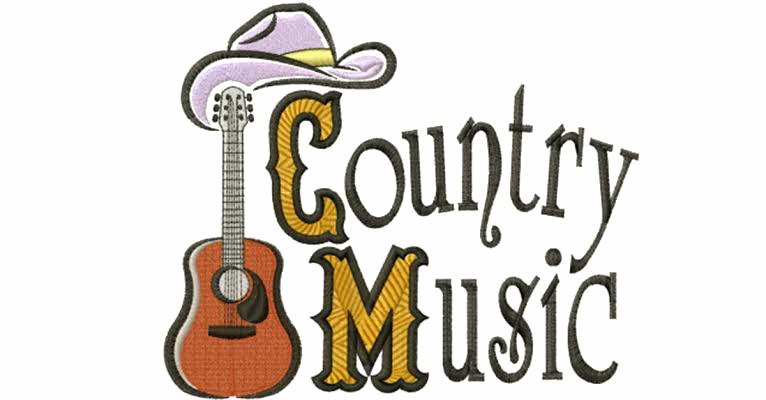
Facts About Music

Music, an integral part of human culture, transcends borders and connects people from diverse backgrounds. To begin with, it serves as a form of expression, allowing individuals to convey emotions that words often fail to capture. Music’s role in emotional expression stands out. For instance, a melancholic melody evokes a sense of sorrow, while an upbeat rhythm lifts one’s spirits. Consequently, people turn to music during significant life events, such as weddings and funerals, to express joy or grief. Additionally, composers and songwriters use music to tell stories and share personal experiences, further highlighting its expressive power.
In addition to emotional expression, it plays a crucial role in social bonding. For example, national anthems instill a sense of pride and unity among citizens. Similarly, festivals and concerts provide a platform for individuals to come together and celebrate.
Furthermore, its education in schools promotes teamwork and cooperation, as students learn to play instruments in harmony with others. Moving to the economic impact of music, the industry significantly contributes to global economies. For instance, the sale of albums, concert tickets, and merchandise generates substantial revenue. Likewise, streaming services and digital downloads have revolutionized the way people access and consume music, creating new economic opportunities. Moreover, music’s tourism, where fans travel to attend events or visit iconic musical landmarks, boosts local economies.
On the other hand, the music industry faces challenges such as piracy and the exploitation of artists. However, various measures address these issues. For instance, stronger copyright laws protect intellectual property rights. Additionally, fair trade initiatives in the music industry aim to ensure that artists receive equitable compensation for their work.
Finally, its therapeutic benefits cannot be overlooked. Research shows that music therapy aids in the treatment of various conditions, including anxiety, depression, and neurological disorders. For example, patients with Alzheimer’s disease demonstrate improved memory and cognitive function through music therapy sessions. Moreover, hospitals and healthcare facilities increasingly incorporate music into patient care to enhance recovery and well-being.
In conclusion, music is a powerful and multifaceted force that enriches human life in countless ways. From emotional expression and social bonding to economic impact and therapeutic benefits, music’s influence is pervasive and profound. Therefore, we must continue supporting and celebrating this universal language that unites us all.
Understanding Music Notes

Music, a universal language that transcends boundaries, relies on music notes at its core. These fundamental symbols convey the pitch and duration of a sound, allowing musicians to bring compositions to life. First and foremost, music notes represent the pitch of a sound. Each note corresponds to a specific frequency, determining how high or low the sound is. Furthermore, the shape of the note indicates its duration, telling us how long to hold it. Whole notes, half notes, quarter notes, and eighth notes exemplify common note durations in music.
Next, let’s discuss reading music notes. We place notes on a staff, which consists of five lines and four spaces. Each line and space corresponds to a different pitch. Additionally, clefs indicate the pitch range of the notes on the staff. The most common clefs are the treble clef and the bass clef. For instance, the treble clef signifies higher-pitched notes, while the bass clef signifies lower-pitched notes. Accidentals, such as sharps (#) and flats (b), raise or lower the pitch by a half step. Moreover, natural signs (♮) cancel any previous accidentals and return the note to its original pitch.
After understanding pitch, we must grasp the concept of rhythm. Time signatures, found at the beginning of a piece of music, indicate the meter of the composition. Common time signatures include 4/4, 3/4, and 6/8. Each beat in a measure receives a certain note value, and together, they define the music’s rhythm. For example, in a 4/4 time signature, four beats exist per measure, and each quarter note gets one beat. Similarly, in a 3/4 time signature, three beats exist per measure, and each quarter note gets one beat. Understanding time signatures and rhythmic values is crucial for accurately performing a piece of music.
In addition to pitch and rhythm, dynamics and articulation play a vital role in music’s expression. Dynamics refer to the volume of the music, ranging from very soft (pianissimo) to very loud (fortissimo). Articulation describes how we play or sing notes. Staccato notes, for instance, are short and detached, while legato notes are smooth and connected. By mastering dynamics and articulation, musicians convey emotion and nuance in their performances. Consequently, this brings the music to life and creates a more engaging experience for the listener. Ultimately, understanding the notes allows musicians to unlock the full potential of the music they play and enjoy.
Apple Music

Apple Music, launched in June 2015, quickly became one of the most prominent music streaming services worldwide. Initially, the platform attracted attention due to its integration with the already popular iTunes and its seamless compatibility with Apple devices. Moreover, Apple Music’s extensive library, boasting over 75 million songs, appeals to a broad range of music enthusiasts. Consequently, the service steadily gained a large subscriber base, rivaling other major platforms like Spotify and Amazon Music.
Furthermore, it sets itself apart with exclusive content and unique features. For instance, the platform offers exclusive album releases and live radio stations such as Beats 1, which features shows hosted by renowned artists and DJs. Additionally, Apple Music’s curated playlists and personalized recommendations enhance the user experience, making music discovery easier and more enjoyable. These features not only attract new users but also retain existing subscribers by continually offering fresh and engaging content.
In addition to its content and features, Apple Music’s integration with the Apple ecosystem provides a seamless user experience across multiple devices. Users can easily access their music library on their iPhone, iPad, Mac, and Apple Watch, thanks to iCloud synchronization. Moreover, it works with HomePod and Apple TV, allowing users to enjoy their music in various settings. This seamless integration ensures that users can enjoy their favorite tunes without interruption, further solidifying Apple Music’s appeal.
Despite its many advantages, it faces challenges and fierce competition in the music streaming market. For example, while it offers a three-month free trial, the subscription cost may deter some potential users. Additionally, competitors like Spotify offer free ad-supported tiers, which Apple Music does not. Nevertheless, it continues to innovate and expand its offerings, striving to maintain its position as a leading music streaming service. As the digital music landscape evolves, Apple Music’s ability to adapt and enhance its service will be crucial to its sustained success.
Amazon Music

First and foremost, Amazon Music offers an extensive library that caters to a wide range of musical tastes. Whether you’re a fan of pop, rock, classical, or jazz, it has something for everyone. Additionally, the platform continuously updates its collection, ensuring that users access the latest releases. This keeps the content fresh and allows users to discover new artists and genres effortlessly.
Furthermore, it provides various subscription options to meet different needs and budgets. For instance, Amazon Prime members enjoy a complimentary subscription to Amazon Music Prime, which includes access to over two million songs. Meanwhile, for those seeking an even more expansive catalog, Amazon Music Unlimited offers tens of millions of songs and premium features. Thus, whether you’re a casual listener or a music aficionado, it has a plan that’s just right for you.
Moreover, Amazon Music’s integration with other Amazon services enhances its convenience and usability. By utilizing Alexa, Amazon’s voice assistant, users control their music hands-free. For example, you can simply ask Alexa to play your favorite song, skip a track, or adjust the volume. This seamless integration makes it easier to enjoy music throughout your home and adds a layer of accessibility for all users.
In conclusion, Amazon Music stands out as a versatile and user-friendly streaming service. Its vast library, flexible subscription plans, and integration with other Amazon services make it a compelling choice for music lovers. With continuous updates and innovations, it remains a leader in the music streaming industry. Consequently, if you haven’t yet explored it, now might be the perfect time to dive in and experience all that it offers.
Pandora Music

In today’s digital age, music streaming services have revolutionized the way we consume it. Among the plethora of options available, it stands out as a pioneer in personalized radio. Its unique algorithmic approach offers users a tailored listening experience, allowing them to discover new artists and genres seamlessly.
Moreover, it enables users to explore a vast array of musical genres, from classical to hip-hop, with just a few clicks. Navigating from one genre to another is effortless, thanks to Pandora’s intuitive interface. By utilizing features such as thumbs up and thumbs down, listeners can further customize their stations, ensuring that each track aligns with their preferences.
Furthermore, Pandora employs sophisticated algorithms that adapt to users’ listening habits over time. As listeners interact with the platform, liking or skipping tracks, Pandora refines its recommendations, delivering a curated selection of songs tailored to individual tastes. This adaptive approach ensures that users continually encounter new artists and songs while still enjoying familiar favorites.
In conclusion, it offers a dynamic and personalized listening experience, making it a preferred choice for music enthusiasts worldwide. Through its intuitive interface, vast music library, and adaptive recommendations, Pandora continues to redefine how we discover and enjoy music in the digital era. Whether you’re a casual listener or a devoted music aficionado, it provides a platform for exploration, discovery, and endless enjoyment.
Christmas Music

As the festive season approaches, Christmas music fills the air, creating an atmosphere of warmth and joy. Traditionally, these tunes evoke memories of family gatherings, decorated trees, and the excitement of gift-giving. Moreover, the melodies of Christmas songs often bring a sense of nostalgia, transporting listeners back to their childhood. Consequently, Christmas songs set the mood for the holiday season.
In addition to its nostalgic value, Christmas songs unite people across different cultures and backgrounds. For instance, people sing “Silent Night” in numerous languages around the world, demonstrating its universal appeal. Similarly, contemporary Christmas hits like Mariah Carey’s “All I Want for Christmas Is You” have become global anthems. Therefore, Christmas songs serve as a bridge, connecting diverse groups through shared festive experiences.
Furthermore, the evolution of Christmas songs over the years includes a blend of various musical styles. While traditional carols remain popular, modern artists introduce elements of pop, rock, and jazz into their holiday albums. This fusion of styles keeps Christmas songs fresh and exciting, appealing to younger generations while still honoring classic traditions. Thus, the genre continues to evolve, ensuring its relevance and enjoyment for all ages.
Finally, Christmas songs impacts more than just entertainment; it also has therapeutic effects. Research suggests that listening to songs can reduce stress and enhance overall well-being, and Christmas music is no exception. The cheerful tunes and uplifting lyrics can elevate moods and foster a sense of community and togetherness. Consequently, Christmas songs not only celebrates the holiday season but also contributes to emotional health, making it an integral part of the festive experience.
Click to get more Christmas Songs
Country Music

Country music, with its roots deeply embedded in the folk traditions of the Southern United States, has evolved significantly since its inception. Initially, country songs drew heavily from the folk songs of immigrants, blending them with the rhythms and instruments familiar to rural American life. For instance, the banjo, fiddle, and acoustic guitar dominated early country tunes. Over time, the genre formalized, and the first commercial recordings in the 1920s popularized country songs beyond its regional origins. Consequently, this foundation spurred the genre’s growth and transformation in the decades to come.
In the 1940s and 1950s, it underwent a pivotal transformation. With the advent of honky-tonk, a subgenre characterized by its raw, emotional lyrics and upbeat tempos, artists like Hank Williams and Patsy Cline rose to the forefront. Meanwhile, the rise of the Nashville sound in the 1960s brought a more polished, mainstream appeal to country songs, incorporating elements of pop music to attract a broader audience. As a result, Nashville emerged as the epicenter of the country music industry, solidifying its influence on the genre.
Going into the 1980s and 1990s, country songs continued to diversify. Artists such as Garth Brooks and Shania Twain pushed the boundaries by blending traditional country elements with rock and pop influences. This era witnessed the genre reaching unprecedented commercial success, as well as a broader, more varied fan base. Furthermore, the emergence of country pop created a pathway for artists to achieve crossover success on both country and mainstream music charts. Consequently, this period marked a significant shift in how the public perceived and consumed country songs.
Today, country songs are more diverse and dynamic than ever before. Modern artists like Kacey Musgraves and Chris Stapleton redefine the genre by incorporating indie, rock, and soul influences into their music. Additionally, the rise of digital streaming platforms allows for an even wider dissemination of country songs, giving both established and emerging artists a platform to reach global audiences. In conclusion, country music’s ability to adapt and evolve while maintaining its core elements ensures its enduring popularity and relevance in the ever-changing landscape of popular music.



Great facts about music
Indeed music is food for the soul.
It’s really good in expressing emotions.